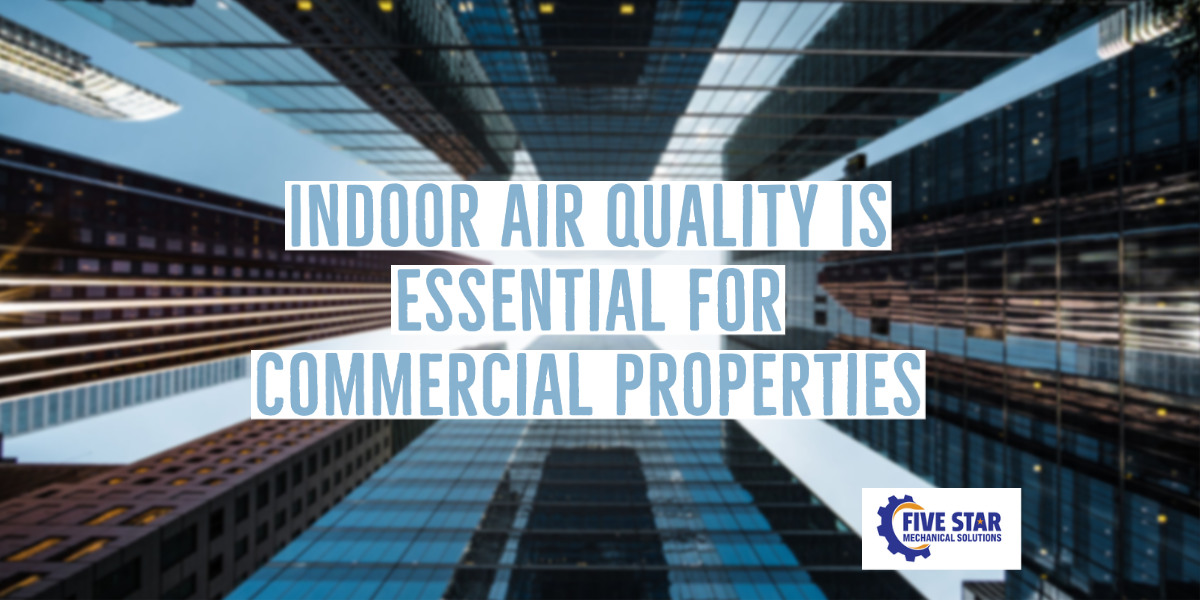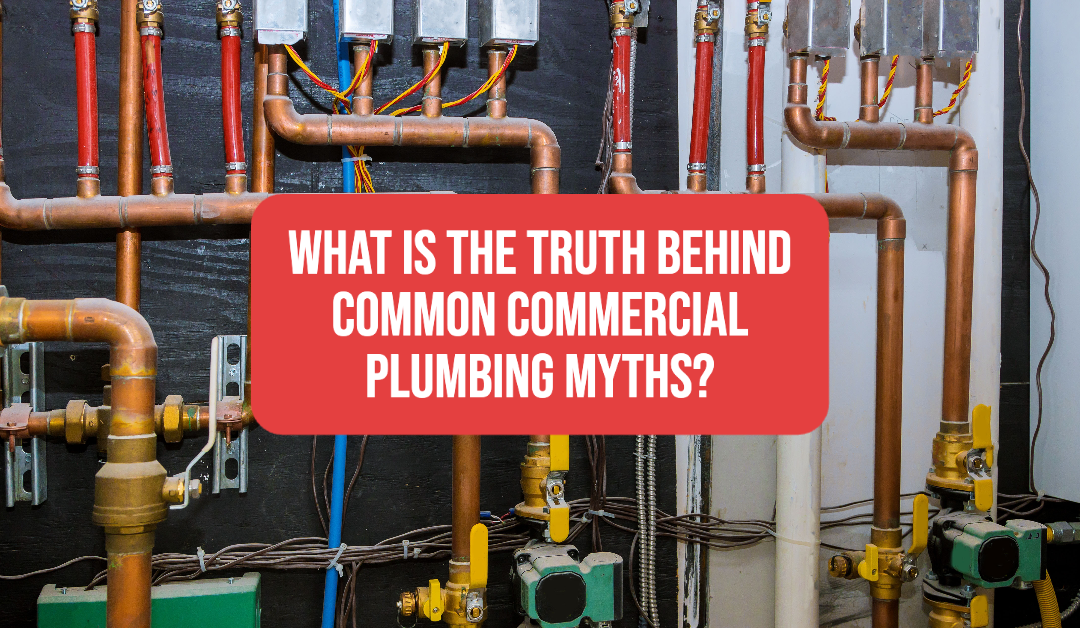Here’s Why:
Why Indoor Air Quality Matters the Most in Commercial Settings
We cannot see what’s floating around in it but the air we breathe beyond the shadow of a doubt has wide-reaching implications on our health, happiness, and well-being. In fact, the EPA says indoor air quality (IAQ) is ranked as one of the top factors impacting public health these days.
Despite the fact that Americans spend an average of 90% of their time indoors, indoor air pollution levels are often up to 5 times higher than outdoor air quality. In the following, our air care experts here at Five Star Mechanical Solutions explore the sources of poor indoor air quality in commercial settings and commercial buildings and the costly consequences of inadequate ventilation. If you own business property or a building that is occupied by people on a regular basis, you can’t afford to ignore this issue. It isn’t going away.
Causes of Indoor Air Quality Issues
Did you know commercial settings are prone to poor indoor air quality? This is true because of the constant flow of occupants and the transient nature of their stay. Additionally, polluted outdoor air often creeps inside these spaces through the buildings’ doors, windows, roofs, and even ventilation systems.
Nevertheless, there is another culprit causing poor indoor air quality that often gets overlooked: This culprit it caused by airtight construction.
While having air-tight construction helps reduce heating and cooling costs in a building, it also reduces ventilation rates and prevents the building from pulling in fresh outside air that is very much needed to prevent the same air from recycling. Because of this, indoor pollutants often become trapped inside the building and can cause issues like “Sick Building Syndrome.” To make matters worse, recent pushes in building codes towards energy-efficient designs have made the problem more prevalent for HVAC professionals.
In addition to airtightness, poor indoor air quality can also stem from:
- Mold and moisture
- Composite wood and laminate adhesives in building materials
- Chemical off-gassing from building materials such as paints, carpets
- Volatile organic compounds (VOCs) released from cleaning products and materials
- Radon infiltration from the uranium within the soil beneath the building’s foundation
Consequences of Poor IAQ
Poor indoor air quality can cause several adverse health effects including headaches and fatigue. It can also cause irritation in the nose, throat, and eyes. These symptoms are detrimental in any context but can be particularly detrimental in these particular settings:
School Settings
Children spend 6 hours on average each day — totaling roughly 1,000 hours per year — in school buildings. Despite this, a lot of area schools have ventilation rates that fall below the recommended levels and contribute to poor performance, absenteeism, and respiratory illnesses like asthma and allergies. Ventilation is required to provide fresh air and remove the allergens that trigger these illnesses.
In addition to improving school attendance, improving indoor air quality increases productivity and improves performance on concentration and recall in young children. These effects also extend to instructor performance, with studies finding improved teacher productivity in environments with better indoor air quality.
Office Buildings
The average workweek is 40 hours. Within that, poor ventilation can have a substantial impact on the health of employees and the success of the company overall. This is one of the reasons why business owners can’t afford to ignore air quality. Overall, employees are more productive and have better decision-making capabilities in settings with better air quality in the workplace.
Healthcare Facilities
Proper ventilation is especially important in healthcare settings because healthcare employees and patients have a greater risk of exposure to contaminants and pollution, including those with potentially infectious particles and pathogens.
Health care facilities with poor ventilation systems and poor IAQ may unknowingly increase the concentration of airborne fungi or mold to name a few, and this causes allergic responses in workers and occupants.
For engineers and facility managers responsible for selecting ventilation systems, understanding the impact of IAQ in different settings can help determine the solution that makes sense for the space.
Our air quality consultants at Five Star Mechanical Solutions can help you identify the ventilation solutions and indoor air quality solutions that makes sense for your specific building. Give Five Star a call today to get the ball rolling on improving your indoor air quality without all the hassle of high prices you’ll get from our competition.




